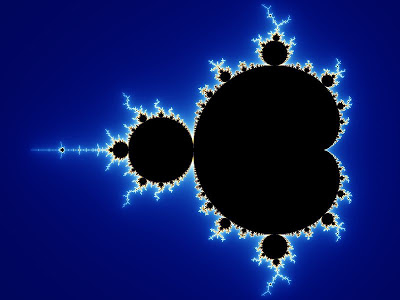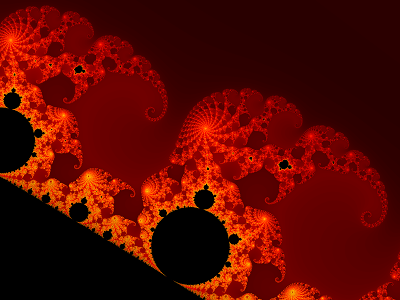
Save the intervention - I admit it. I am a fractal freak. I first fell in love with fractals in high school. I read a science fiction book based on fractals, and the whole world within a world within a world concept just grabbed me. I believe I next fell in love with the Mandelbrot set, which is fantastically gorgeous. But I truly, truly fell in beyond retrieval last Friday, after watching the Nova program ”Hunting the Hidden Dimension”.
Visually, fractals are just seductive. But they appeal to the science geek in me as well. Because fractals live at the intersection of math, science, nature, and art. And who wouldn’t want to live there? Your neighbors would be spectacularly entertaining.

Fractals are created by running data through the same equation over and over (iteration). The really pretty pictures come from graphing the results.
Fractals are all over nature. You really can’t avoid them. The way trees branch is fractal (they branch, and then they branch again, and then they branch again…) But did you know that forests are fractal, too? Clouds and mountains follow fractal patterns. That frost on your windowpane? Fractal. Your heart beats in fractals, and your blood veins are fractal, too.
Fractals have been used in clothing designs, medicine, and pretty much every movie with special effects. And your cell phone just wouldn’t work without that fractal antenna embedded in it. Jackson Pollock’s work has been analyzed, and it contains fractals. They’re gorgeous, they’re seductive, they’re brilliant, they’re… OK, I see you glazing over. I’ll go chortle over my fractals in private now.
The top picture shows the Mandelbrot set. The second picture shows a zoom of the Mandelbrot set, which shows how the pattern repeats. These gorgeous graphics of the Mandelbrot set are from the Wikimedia Commons.
